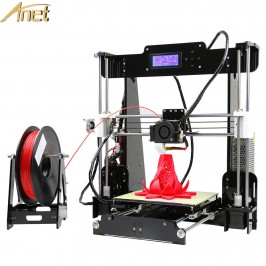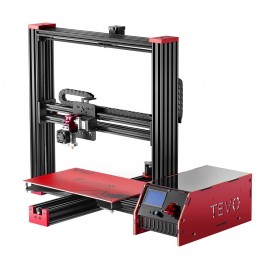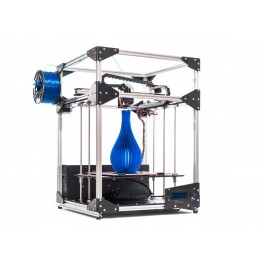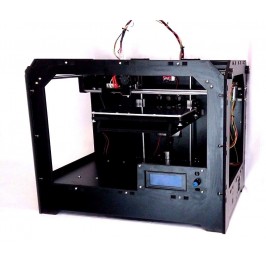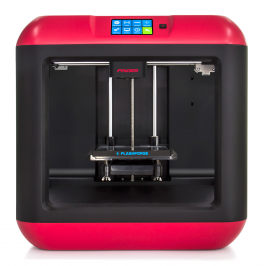Secrets of Ceramic 3D Printing
Hello folks, when we hear about 3D printing we tend to immediately think about products made out of Plastics and Metals. Believe me 3D printing has a lot more potential than being restricted to synthetic materials and hard to work with metals.
Did you ever hear about Ceramic 3D Printing?
Yes you heard me right, Ceramic 3D Printing has been around for a few years now, however we hardly get to hear about it. Let’s try to see explore some lesser known facts about this kind of 3D Printing and ponder over its potentials. (Please pardon me as I make this a dumb guide to Ceramic 3D printing. The purpose of it is to make it as simple as possible.)
So what Is Ceramics?

A ceramic material is an inorganic, non-metallic, often crystalline oxide, nitride or carbide material. Some elements, such as carbon or silicon, may be considered ceramics. Ceramic materials are brittle, hard, and strong in compression, weak in shearing and tension. Source: Wikipedia.
In simpler terms it’s the raw material of the coffee cup that you drank at starbucks today, but that’s making it over simple. Ceramics have some amazing properties which the modern science is still trying to explore. Some of these include Electrical properties which are used in making Semiconductors. it is also used as quartz in watches which uses piezoelectric property of ceramics that lets electricity produce a mechanical motion (powering the device) and then using this mechanical motion to produce electricity (generating a signal).
Heat resistance is a yet another amazing capability of ceramics, most space ships are covered with tiles made of ceramics that helps keep the heat from destroying the ship on re entry into the earth’s atmosphere.
Dental Implants are also made using porcelain, yet another kind of ceramic. Ceramic materials for implant devices are now widely being used for hip replacement implants. There are many other medical applications of it and many are still being discovered by modern science
I have not even begun praising the properties of ceramics and this article is already becoming too long. While re searching for this article I failed to understand why we did not name an era of human history to Ceramic Age just like we have the Stone Age and Bronze Age.
If you are interested in exploring more properties of ceramics feel free to go to the Wikipedia source mentioned above
Now let’s understand some of the Jargon related to Ceramic 3D Printing as it may come in handy.
Note these are just a few of them for the full list please head over to the Glossary of pottery terms Wikipedia source.
· Clay: a fine-grained natural rock or soil material that combines one or more clay minerals with traces of metal oxides and organic matter.
· Ceramic: an inorganic, non-metallic solid material comprising metal, non-metal or metalloid atoms. It is usually made from clay sintered in a kiln.
· Porcelain: is a material made by heating materials, generally including kaolin, in a kiln to temperatures between 1,200 and 1,400 °C (2,200 and 2,600 °F).
· Green object: A Clay object that needs to go through the sintered process in a Kiln,
· Kiln: An oven used for the post processing (sintering) of the green object.
What we need to focus here is that even though the raw material remains the same (which in this case is clay) the end product can depend on the kind of post processing you do on it inside the Kiln. Another notable observation is that in order to make anything with ceramics we would need a furnace hence working with ceramics is strictly restricted to professionals who are already working in the field. 3D Printing in this case is restricted to just giving shape to the raw clay and there is no alternative to the post processing.
Let’s try to see the different 3D printing technologies being used to work with Ceramic 3d printing. I am sure all those reading this would be aware about the terms like FDM, SLA and SLA but if you are not, feel free to go to the link below.
Types of 3D printers or 3D printing technologies
FDM Ceramic 3D Printers
are modified versions of FDM printers fitted with special paste extrusion pumps which ooze out the sticky gooey material - Clay. There are some companies what are experimenting to make filaments that have clay like properties but it’s far from achievable right now. Delta 3D Printers seems to be a favourite choice of use in this category as it gives the maker the freedom to build larger products. Some of the companies which have commercial FDM based Ceramic 3D Printers are as follows.
WASP 3D Printer:
This is an Italian company that specialises in huge size delta 3d printers biggest of them being the all new BigDeltaWASP 12. The company has recently integrated an add-on offering that works seamlessly will all the company’s printers and it’s called the LDM WASP Extruder
This LDM (which stands for liquid deposit modelling) WASP Extruder kit helps convert almost any Delta 3D Printer into a clay printing machine. Some salient features of this extruder include:
· Bubble eliminating extruder, it eliminates air bubbles in the mixture
· Extrusion controlling system with retraction option
· Outward pressure multiplier until 40 bar in the screw extruder
The Paste tank which is an integral part of the kit is available in standard 3 KG however can be upgraded to a 15 kg Tank on demand. The tank and the steel extruder works with most kinds of clay however if you are in Europe and want a readymade mix of clay, it’s also available with the company for 50 Euros. The cost of this LDM WASP Extruder kit is around 650 Euros exclusive of taxes and shipping.
3D PotterBot :
Created by a company called Deltabot is one of the only few companies that exclusively makes Ceramic 3d printers. The company currently offers Ceramic 3D Printers in 3 different sizes under the FDM segment. These 3D Printers resemble a CNC Milling machine/router using an arm design and with a moving base it could get better precision and constant layer height on the z axis. The company’s printer does not use air compressors like other suppliers to pump the clay using smaller hose, instead their printers use storage tank just above the nozzle and extruder prints directly from the nozzle of the extruder
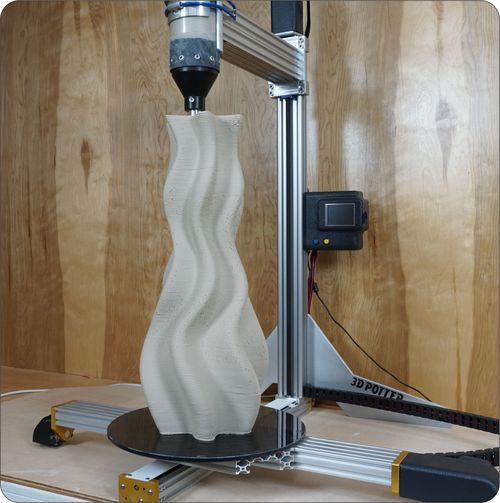
It also has a built touch screen, variable clay tank sizes and 4 variants of nozzle based on the diameter size gives this printer an added advantage. These printers use DC servo motors which operate extremely quietly and quickly, while still having the highest torque levels of all of our machines. These printers cost from $4950 to $7800 depending on the build volume.
DeltaBots also offers a 3D printer which is a fusion of the FDM (Fused Deposition Model) as well as SLA (Stereolithography). It’s called the V2.5-UV PASTE 3D printer; it’s very unique as it works with a special material which they call as UV paste vinyl ester resin. V2.5-UV PASTE 3D printer is basically a huge printer which extrudes liquid resin which is then solidified with UV lights immediately. This is not a Ceramic printer but a completely unique concept that proves that the company is ready to innovate and experiment with newer technologies
DIY Ceramic Delta 3D Printer:
If you are interested in making your own Ceramic 3d printer you could follow the footsteps of a British designer Johnathan Keep. He has posted a complete step by step guide of him making a FDM based Ceramic Delta 3D Printer.
His blog also consists of Cad files which include the guides to laser cut the MDF for the chassis of this 3D Printer. His blog also has the complete list of Mechanical and electronic components used to construct the 3D Printer. On the software side he used Johann Rocholl’s modified Marlin firmware and a copy of the same is also available on the developer’s website
According to Mr. Keep the whole printer components cost him around $700 which makes his effort pretty commendable. Check out the video of the printer in action
SLA Based Ceramic 3D Printers
This is the newest kind of 3D printing out there in the market and could be made possible only because of advancement of material science and easy availability of 3D Printers.
3D Printing companies are taking 2 different approaches to make SLA/DPL based Ceramic printing possible. While some are busy making custom made 3D Printers which works with special photoactive resins which have ceramic properties there are others which are concentrating their efforts on making Resins which work on most commercially available 3d printers. The only possible disadvantage of using this kind of 3D Printing technique over others is that the printed objects undergo high percentage of shrinkage in the Kiln. This means that the designer needs to have great CAD Skills or else 3d printed parts might just break during post processing.
Let’s look at these companies and their offerings.
Ceramaker:
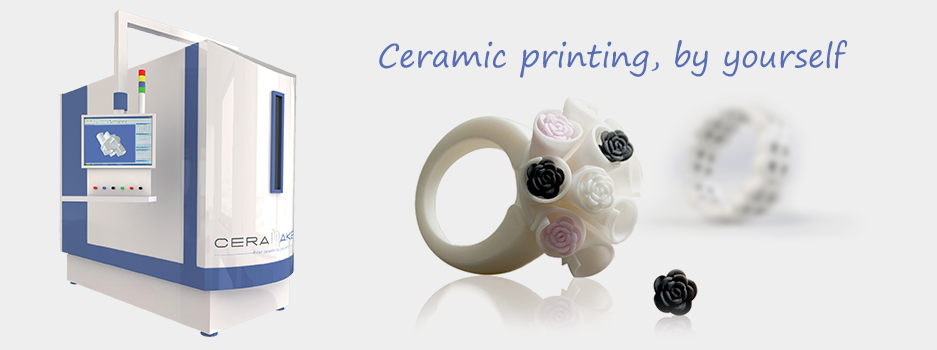
It is a Ceramic 3d Printer made by an Italian company called 3DCeram. Creamakers is a close source 3D Printer which uses proprietary resins cartage to make ceramic products. The resin is a mixture of photosensitive monomer/oligomer loaded with ceramic particles. This resin is cured using UV laser which solidifies a layer of the material and the process is repeated until the object is completed. These layers can be as fine as 25 microns which means the final product will be of extreme fine quality. The printers build tank is 300*300*110 mm making it a decent size printer. We are not sure about the price of the printer but if you are interested in their offering you could contact the company directly.
Porcelite
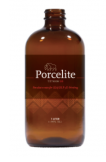

It is a liquid resin which has properties like ceramic made by a company called Tethon 3D from Omaha, Nebraska. Porcelite is a resin that works with most commercially available SLA/DLP 3d Printers. The process of printing is pretty strait forward if you have worked with Steriolitograpy printers. If you are using this resin you could take the added advantage of high resolution print quality of a SLA printer, but then this resin is also prone to shrinkage so that needs to be kept at the back of the mind at the design stage
SLS Based Ceramic 3D Printers
SLS is an abbreviation for Selective laser sintering; it is one of the oldest form of 3D Printing technology. It’s a technique that uses a laser as the power source to sinter powdered material (typically metal), aiming the laser automatically at points in space defined by a 3D model, binding the material together to create a solid structure. Z Corp was one of the pioneers of Ceramic SLS 3D printing but then 3D System happened to take over the company and for them the focus area was certainly not Ceramics
One can still find older Zprinter 310 and 510 Series ceramic 3D printers on the market at a relatively low price and if you have the budget you could select the newer 3D Systems x60 series. 3D Printed parts made using SLS can achieve so called impossible geometric shapes and patters however the printed parts using this also tend to shirk inside the kiln.
Tethon 3D a company we discussed earlier also makes powder and binder for the older z corp printers which and are available for $360 and $70 respectively.
If you are not completely interested in investing into a 3D Printer that works with only ceramics but still need to take advantage of the mysterious properties of ceramics, you could try these online printing services which provide Ceramic 3D printing as well as glazing options
Shapeways
The company has started 3D Printing with Ceramics and have been offering the services ever since mid 2015. The company uses its army of SLS 3D Printers to cater to ceramic 3D Printing demand. It also has a complete know how posted on their website which explains how to design an object for Ceramic 3D Printing

Here are Shapeway’s offer for different glazing (Finishing) Options.
Finishes in Glass white, Gloss Red, Matte Black, Celadon Green.
Limited Edition Finishes: Gloss Oribe Green, Gloss Black, Cobalt Blue and Gloss Blue. (Note these Glazing options are subject to change.)
Fixed price for any part to be 3D Printed in ceramic is $9 + $0.10 per surface area cm2. And expected shipping period is 10 business days for US, CA, NZ , AU and 12 business days for Rest of the world
Sulpteo
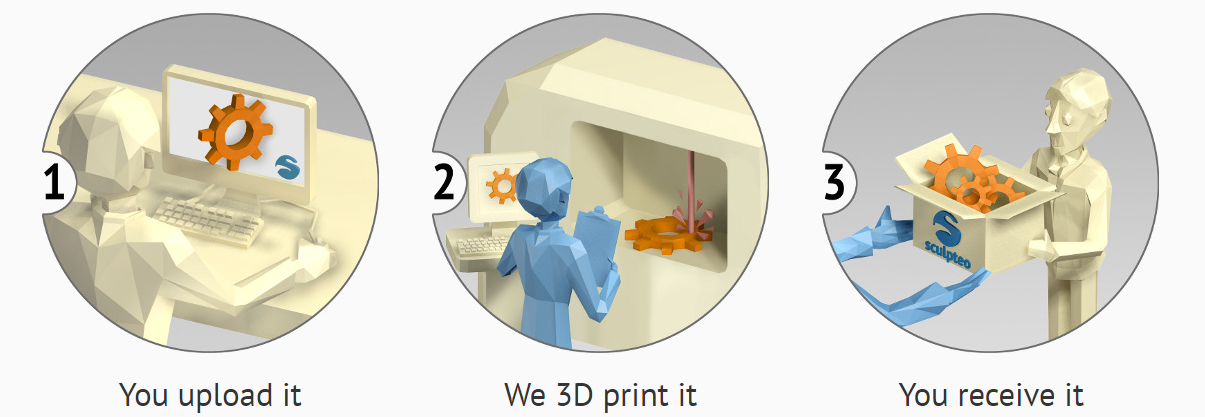
A French company is a well known name in the 3D Printing industry. The company started offering Ceramic 3D printing services around a year ago. The users can upload the CAD file on their system and select porcelain as the material of choice. Once uploaded the design file can undergo a lot of tests on their online software, you can also hollow the product to save the material which also decreases the cost of the product. Available glaze colours are White Glossy, Oyster Blue, Tangerine Orange, Turquoise, Aquarius Blue, Black, Anis Green and Lemon Yellow.
iMaterialise

The company also uses Zcop SLS 3D printers like the others on this list. The Ceramic 3D printed parts are made using alumina-silica ceramic powder and sealed with porcelain and silica. Once printed the parts are glazed with non toxic colour hence making it heat resistant up to 600 degrees, food safe as well as non porous at the same time.
Available colours are Gloss White, Gloss Black, Banana Yellow, Tomato Red, Safety Orange, Apple Green and Denim Blue. The cost for a 3D printed part is calculated at 0.18 USD/cm², based on the surface area of your model, not on the volume of material used.
With this we are at the end of this article, we hope we have been able to cover all the questions you might have about Ceramic 3D Printing. If we have ignored something kindly feel free to point it out to us by commenting below

